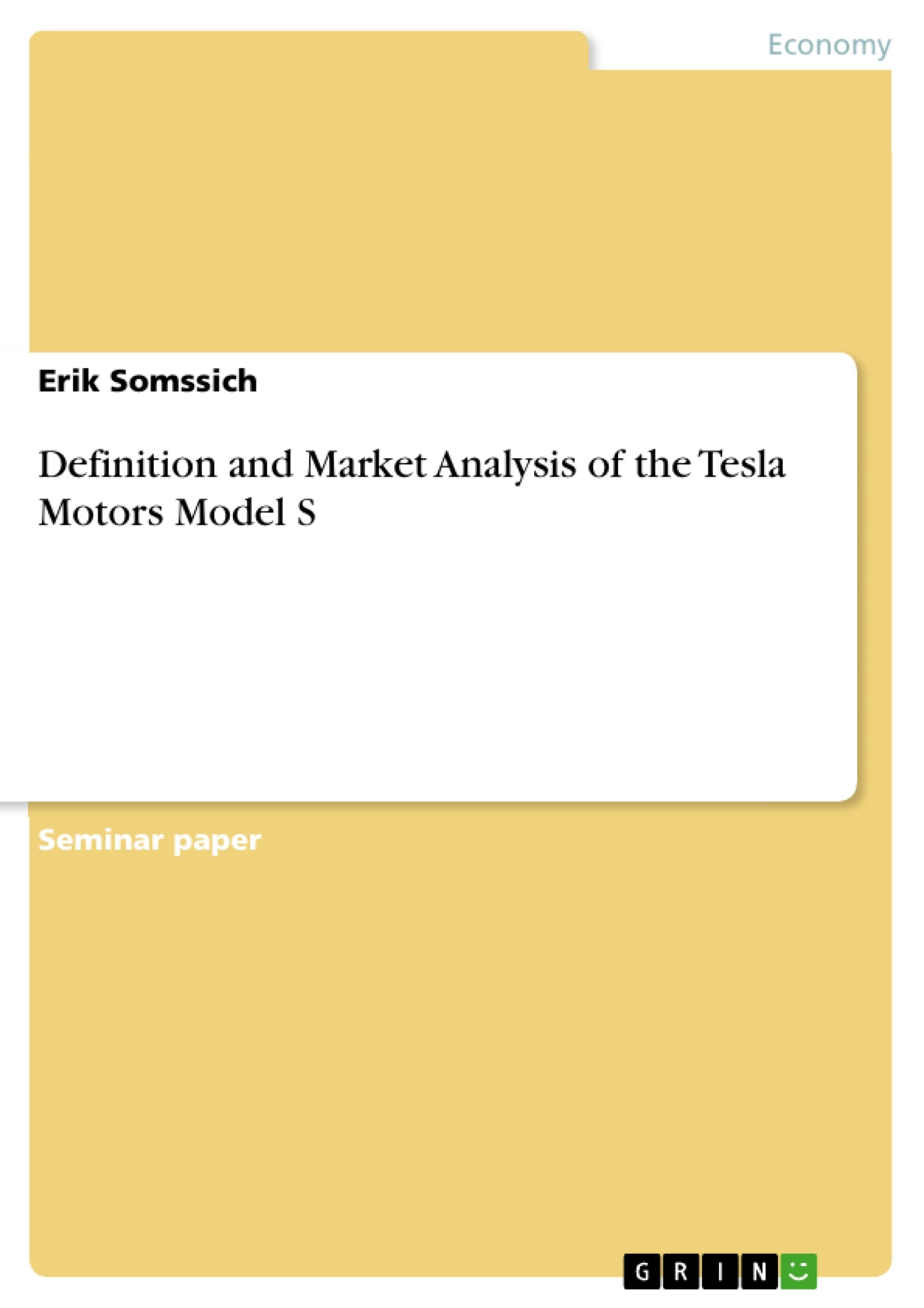The purpose of this document is to analyse the strategic marketing positioning of Tesla Motors with the focus on its premium electric car, “Model S”.
From the text:
- The Company Tesla Motors;
- Business Analysis;
- Market Analysis;
- Market Positioning and Strategy
Inhaltsverzeichnis (Table of Contents)
- Introduction
- The Company Tesla Motors
- Mission & Vision
- The Model S
- Business Analysis
- External Business Environment
- Political
- Economical
- Social
- Technological
- SWOT-Analysis
- Strength
- Weaknesses
- Opportunities
- Threats
- External Business Environment
- Market Analysis
- Competitive Strategy
- Competitor Analysis
- Customer Analysis
- Market Positioning and Strategy
- Conclusions
Zielsetzung und Themenschwerpunkte (Objectives and Key Themes)
This paper examines the strategic marketing positioning of Tesla Motors, focusing on its premium electric car, "Model S". The document aims to provide a comprehensive analysis of the company's mission, vision, and market position, as well as an in-depth look at the Model S's key features, performance, and target audience.
- The company's mission to drive change in the automotive industry from fuel-operated to solar-electric vehicles.
- Tesla's strategy of entering the high-end market with a premium product to optimize costs and drive down prices with successive models.
- The unique positioning of the Model S as a zero-emission, sustainable luxury sedan.
- The competitive landscape and strategic analysis of Tesla's competitors.
- The target market for the Model S and the factors influencing customer choice.
Zusammenfassung der Kapitel (Chapter Summaries)
The paper begins with an overview of the changing automotive industry, highlighting the growing demand for fuel-efficient vehicles and alternative drive concepts. It then introduces Tesla Motors, its history, and its commitment to developing electric vehicles. The paper explores Tesla's mission and vision, emphasizing its unique approach of entering the luxury market with a premium product. The Model S is introduced as a four-door premium sedan electric car with a range of up to 300 miles on a single charge. The paper delves into the company's business analysis, encompassing its external business environment and a SWOT analysis.
The paper also focuses on the market analysis, examining Tesla's competitive strategy and competitor analysis. The paper further analyzes the customer base for the Model S, exploring the factors influencing customer choice. It concludes by discussing Tesla's market positioning and strategy, highlighting its unique approach to targeting the premium electric car market.
Schlüsselwörter (Keywords)
This document focuses on Tesla Motors, a global enterprise designing, producing, and marketing electric vehicles and its components, specifically the Model S. The paper examines key concepts such as mission and vision, market positioning, business analysis, competitive strategy, customer analysis, and the automotive industry's shift towards sustainable and fuel-efficient vehicles.
- Arbeit zitieren
- Erik Somssich (Autor:in), 2016, Definition and Market Analysis of the Tesla Motors Model S, München, GRIN Verlag, https://www.grin.com/document/356695



